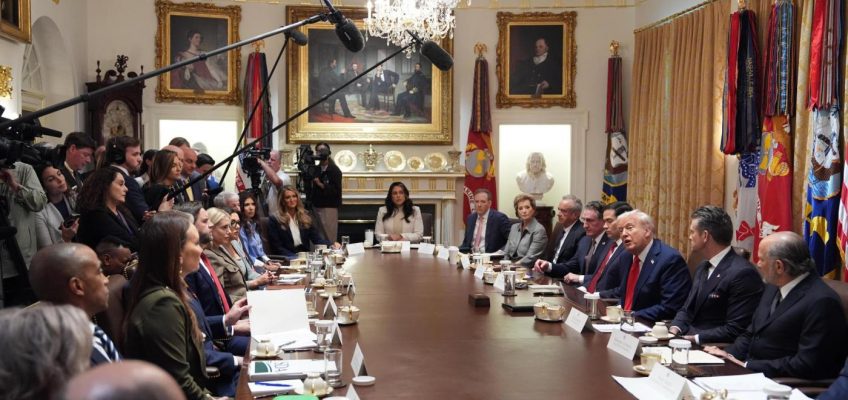When you think of veteran leaders on a hockey team, a guy in his 30s with a beard and the battle scars of 600-plus nights in the NHL trenches comes to mind. The Minnesota Wild have more than one of those, personified by the likes of Zach Bogosian and Ryan Hartman, who fit the part, right down to the beard.
Minnesota Wild’s Brock Faber (7) looks to pass during the second period of an NHL hockey game against the St. Louis Blues Thursday, Oct. 9, 2025, in St. Louis. (AP Photo/Jeff Roberson)
On a Wild roster featuring an abundance of youth in the likes of David Jiricek (60 regular season NHL games on his resume entering this season), Liam Ohgren (29), Daemon Hunt (13), Zeev Buium (0), Danila Yurov (0) and Hunter Haight (0), the Minnesota coaches are looking to a younger leadership group, much closer in age to the newbies, to offer friendship in the room and advice on the ice.
Among those coach John Hynes is leaning on to lead the way for his six-pack of newcomers are top-line forwards Matt Boldy and Marco Rossi, each of them 24, and defenseman Brock Faber, who turned 23 this year but is rapidly approaching 200 NHL games in the regular season and playoffs.
“Brock’s a young guy, but he has had great experience and is a little bit mature beyond his years,” Hynes said, following the season-opening blowout win in St. Louis. “I’d say the same thing for Boldy and Rossi. They’re two young guys, but they’ve played important roles for our team.”
While the experience of longtime NHL fixtures like captain Jared Spurgeon and two-time Stanley Cup winner Vladimir Tarasenko cannot be discounted, Hynes’ trio of younger leaders is expected to be vital this season as injures and other moves force more players from the Iowa Wild into the NHL lineup.
“All three of them, even though they’re under 24, because they have strong experience … their focus level, their maturity as people and I think in life helps,” Hynes said. “Because they’re so close in age with some of those young guys as well.”
For Boldy, it was just four years ago that he was a NHL rookie. So he still has fresh memories of those exciting and stressful first games in the spotlight of the world’s top hockey league and can relate to what teammates like Ohgren, who sits next to Boldy in the team locker room, are facing.
Just a few years ago, players like Kirill Kaprizov, Joel Eriksson Ek and Marcus Foligno – then in their 20s – were in the “young mentor” role for newbies like Boldy.
“I feel like we’re still in that position, but obviously not very far removed,” said Boldy, who had a goal and two assists in the 5-0 win over the Blues on Thursday. “A lot of the same guys from my first year are still here, and I think how good they were when I came in, making me feel comfortable and confident. I think that’s something we tried to help everyone else with.”
Haight was one of the last cuts from training camp, but his trip to Iowa was a down-and-back, as the Wild recalled him almost immediately when it became clear that veteran Nico Sturm would not be healthy enough to start the season centering the fourth line.
In his NHL debut on Thursday, with a number of family members and friends from around London, Ontario, in attendance, Haight logged 10 minutes of ice time, recorded two hits, and won five of the eight faceoffs he took.
Even when they were sending him down to the minors initially, the Wild leadership’s message to Haight was that he was on the cusp of being a contributor at the NHL level.
“It was that I was right there, and just to keep working and keep doing what I’m doing,” Haight recalled. “Because it’s working and it’s catching eyes, and I’ve just got to go up from there.”
After leaving Boston College for the pro ranks, Boldy logged two dozen games in Iowa before getting called up to “the show.” Now in the role of mentor instead of mentee, he knows the fragile confidence level some players have, and what veterans in his position can best provide.
“It’s stressful. There’s a lot going on. You can’t get too low or too high, I think that’s the biggest thing,” Boldy said. “Everything comes. Points come, goals come. You’re going to get put on the ice a lot more when you’re doing the right things, and that’s usually when you’re not thinking about the other stuff.”
With youth on one end, seasoned veterans on the other end, and a young leadership group in, the Wild head into their home opener, and the 80 games beyond, believing that they have a mix that will mean another playoff trip, and more, in 2025-26.
Related Articles
Four must-try new foods at Wild games this season
Wild deliver Hartman attack to Blues in opener
St. Louis means excitement and also painful memories for Zeev Buium
Vladimir Tarasenko finds opportunity in his welcome to the Wild
Injuries already taking a toll on Wild




